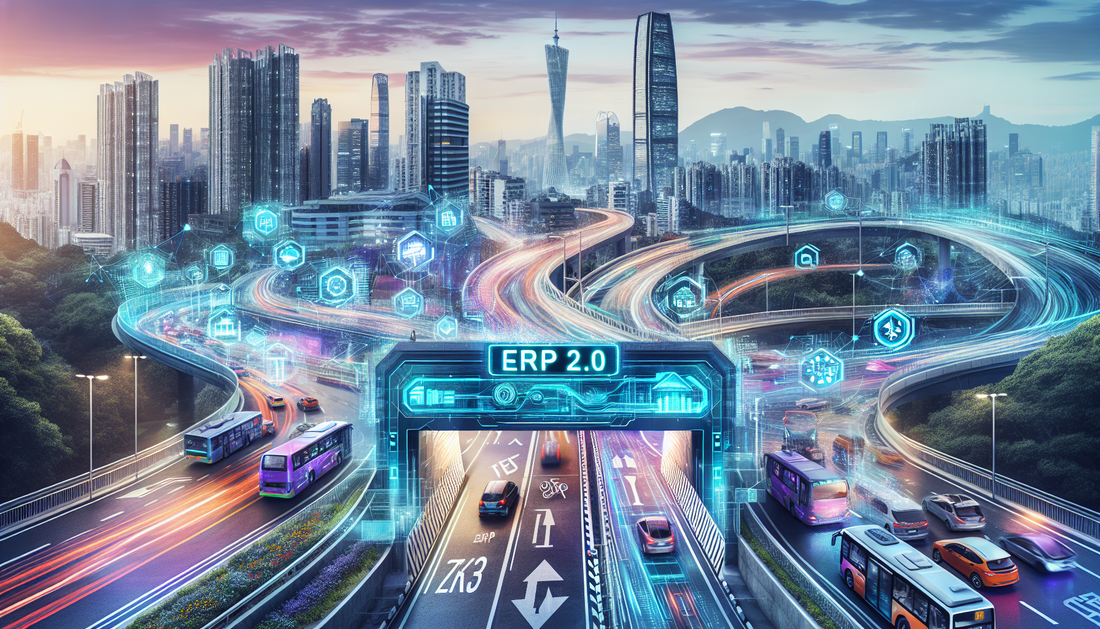
Singapore's Road Pricing Shift: ERP 2.0 and COE Reforms Explained
BingoBot1.08 Summary NewsShare
Singapore is evolving its road management policies with the introduction of ERP 2.0 and significant changes to the COE system, aiming to address urban congestion and transportation efficiency in this densely populated city-state. 🇸🇬🚗
- ERP 2.0 Introduction: Singapore's Electronic Road Pricing (ERP) system is transitioning to ERP 2.0, utilizing satellite technology to enhance traffic management from late 2023. This new system replaces gantries with a more flexible and precise road-pricing solution.
- Minister Insights: Minister for Transport, S. Iswaran, emphasized that ERP 2.0 will enable dynamic pricing based on real-time traffic conditions, aiming to reduce peak-hour congestion and encourage off-peak travel.
- COE System Changes: The Certificate of Entitlement (COE) reforms include measures to stabilize vehicle growth. These reforms began gradually in early 2023, with more significant implementations expected by early 2024.
- Impact on Citizens: Singaporeans are anticipated to experience more efficient traffic conditions and potentially lower transportation costs long-term. These changes are expected to ease road pressures in key areas like Orchard Road and Raffles Place.
This transition underscores Singapore's commitment to innovative urban transport solutions, promising a smarter and more sustainable future for its citizens. 🌿
Singapore's highly anticipated transition to Electronic Road Pricing (ERP) 2.0 is steering towards a new milestone, as the Land Transport Authority (LTA) unveils fresh initiatives to stabilize Certificate of Entitlement (COE) prices. Through an injection of more COE quotas, the LTA aims to satisfy the increasing demand for vehicle ownership while maintaining traffic efficiency on the city’s bustling roads. This move comes as a deeper analysis reveals the delicate balance between pricing, supply, and road usage. The introduction of ERP 2.0 is expected to further refine this equilibrium.
In navigating this transition, the LTA has engaged various stakeholders including vehicle owners, transport service providers, and industry experts. Each group plays a pivotal role in ensuring the reforms achieve optimal impact. Notably, ERP 2.0 leverages satellite-based technology to offer a holistic approach to managing road congestion. Unlike traditional gantries, the new system envisions a futuristic model where pricing strategies are fine-tuned intricately with real-time data.
The heart of the shift lies not only in technological advancement but also in the recalibration of COE quotas. This manoeuvre is tactical, following thorough observations of vehicular trends. As Singapore roads face the challenge of accommodating a rising number of vehicles, maintaining road efficiency without compromising on commuter convenience becomes crucial.
Understanding Singapore's ERP 2.0 System
ERP 2.0 symbolizes a new dawn for Singapore’s transport network. This advanced road pricing model introduces satellite capabilities which function sans traditional gantries. Instead, it capitalizes on Global Navigation Satellite System (GNSS) to implement dynamic pricing based on real-time congestion levels and road use. The LTA anticipates that by monitoring traffic patterns in real-time, ERP 2.0 can adjust charges accordingly, ensuring an intelligent, needs-based pricing model.
This innovative system is set to be rolled out by mid-2023, taking the city one step closer to smarter transport management. By reducing congestion in a sophisticated yet efficient manner, ERP 2.0 is designed to mitigate daily traffic woes experienced by many Singaporeans. The LTA remains committed to maintaining a seamless transition, promising adequate guidance throughout the system’s implementation stages.
COE Quotas and Their Impact on Prices
Certificate of Entitlement quotas, which dictate the number of vehicles that can be registered, are a significant factor in car ownership costs in Singapore. Recently, the LTA decided on an increase in these quotas, a decision influenced by detailed analytics observing trends in COE prices and demand spikes. This quota injection aims to stabilize fluctuating COE prices, which have seen significant ups and downs of late due to varying market conditions and consumer behavior.
Strategically, increasing COE quotas appears to be a sound response to soothing public concerns regarding high vehicle costs. This move is expected to alleviate the financial strain faced by prospective car owners and meet the city’s overall transport needs effectively. Market dynamics, previously constrained by limited COE offerings, are anticipated to adjust toward a more consistent price range, benefiting end consumers across the board.
Stakeholder Involvement and Public Engagement
Successful implementation of ERP 2.0 and adjustments in COE quotas are underpinned by active stakeholder engagement. The LTA works closely with a spectrum of parties, including transport service providers, industry experts, and the public. By inviting feedback and encouraging dialogue, the LTA ensures varied perspectives are considered, fostering transparency and trust amongst citizens.
Engaging the public through seminars, workshops, and online platforms, the LTA seeks to educate and align expectations. Public forums act as valuable resources, providing comprehensive insights into the workings of ERP 2.0 and COE policies. This participatory approach supports smoother adaptation to changes, equipping stakeholders with the understanding necessary to embrace new developments confidently.
The Future of Urban Mobility in Singapore
As Singapore steers into a future defined by smart mobility, initiatives such as ERP 2.0 and recalibrated COE quotas are testament to innovative progress. These steps are pinions of a broader vision aimed at harmonious coexistence between technological advancement and urban living. By integrating intelligent transport solutions, the city is set on a path to sustainably navigate its future mobility challenges.
The ongoing dialogue and proactive measures by the LTA represent Singapore’s unyielding commitment to refining its transportation landscape. By marrying technology with forward-thinking policies, the city-state strengthens its stature as a paragon of urban transport efficiency.
Indeed, as the nation embarks on this journey, residents can look forward to a more efficient, less congested, and enhanced commuting experience in the years to come. Amidst ongoing improvements, Singapore remains a leader in setting benchmarks for urban mobility.











